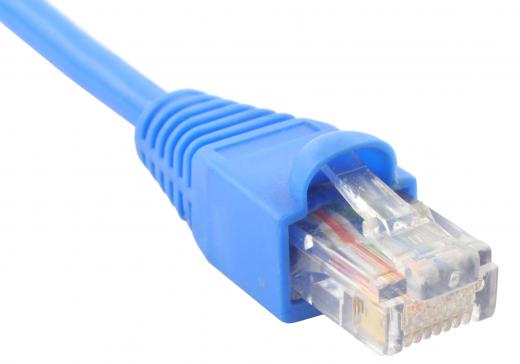A balanced line refers to a transmission line used in telecommunications and audio. It is also called a balanced signal pair. Typically, balanced lines have three conductors. These conductors consist of two signal conductors and a ground conductor.
In balanced lines, the two signal conductors carry the same signal. They do, however, have opposite polarity. These two conductors also have the same impedance at each end.

Balanced line connections reduce noise and interference and are used in long cable transmission lines. High end audio equipment, like some compact disc players and amplifiers, use balanced lines with connections that use three pin XLR connectors. Balanced lines can also be found in Ethernet cables and telephone wires.
When telephones were invented, the need for a balanced line arose. At first, two unbalanced telegraph lines were used. This was, however, insufficient because telephone wires often ran alongside electrical power lines.

The line closest to the power lines would have more interference than the other line. The solution was to have the two lines swap positions at regular intervals to allow each the same amount of interference. As more and more telephones were used, however, cable came to be preferred over open wires to save space and to have better performance in bad weather.
Balance lines are used because noise and interference can create problems when transmitting a signal over a line. These problems are caused by electromagnetic interference from stray electric fields. In a balanced line, the two conductors are twisted together so they can be equally exposed to external electric fields, minimizing this interference from stray fields. To ensure even less interference, often a balanced line will also have electromagnetic shielding.
There are two kinds of balanced lines: twisted pair and twin-lead. Twisted pair balanced lines are used for lower frequencies while twin-lead balanced lines are used for radio frequency signals. Twin-lead balanced lines consist of two copper lines or of copper clad steel lines that are separated by a plastic polyethylene ribbon. They have to be separated so they can function as a parallel transmission line.
Twisted pair balanced cables were designed but not used much until the repeater amplifier was available. Before then, a cable could only work in about 18 mile (about 30 km) lengths whereas open wires could work over much longer distances. All the distance problems were solved in 1912 when repeater amplifiers began to be installed.
Balanced lines are an alternative to an unbalanced line, such as a coaxial cable. Unbalanced lines have their return conductors connected to ground or a return conductor that actually is ground. Both kinds of lines can be connected by using a transformer, which is called a balun.
